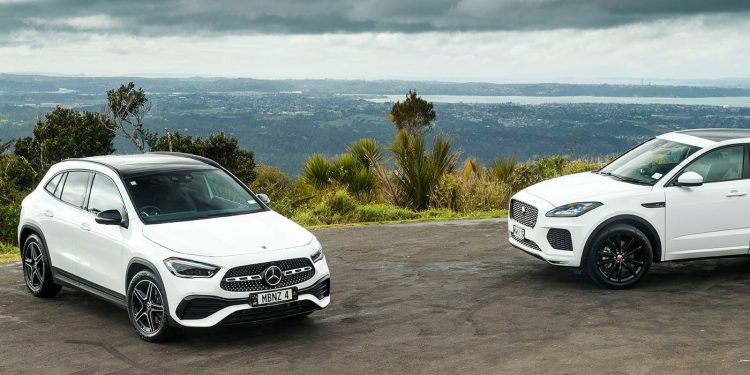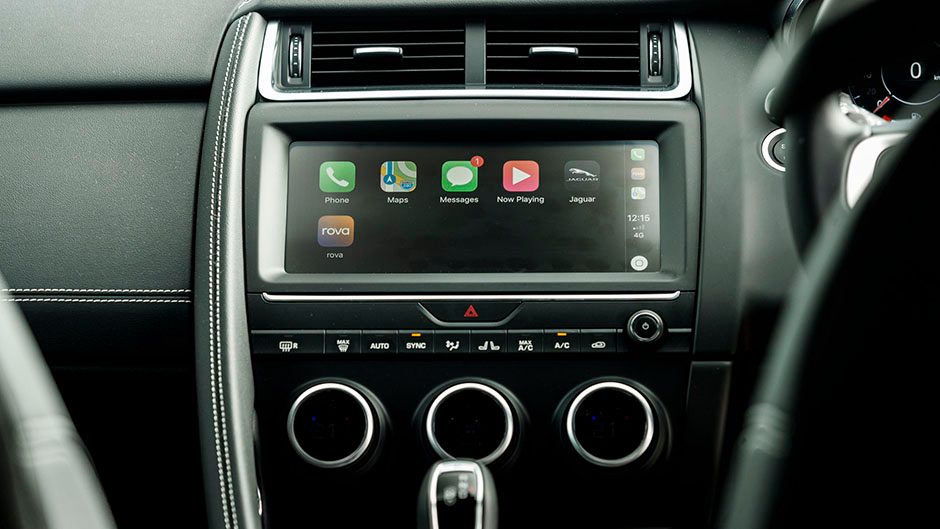2020 Jaguar E-Pace P250 R-Dynamic SE vs Mercedes-Benz GLA 250 4MATIC comparison
Words Peter Louisson | Photos Tom Gasnier
With the arrival of the second-generation GLA in 250 AWD guise, we lined it up against another euro wearing a 250 badge, a 2020 Jaguar e-pace. How similar are they?
With SUVs now firmly ensconced as the preferred type of passenger vehicle over sedans and hatches, it’s no surprise that there’s an SUV at virtually every price point. Sales of small SUVs have gone nuts in the past few years, and yet only a decade ago they weren’t even a thing. Now they represent one in every five new vehicles sold, such is their popularity. The choices are immense. Medium SUVs continue to truck along well too, representing another 20 per cent of new vehicle sales. Amongst luxury vehicle sales, SUVs now comprise over 80 per cent and slick and quick premium compact and medium versions are available from all the usual high-end suspects.
New to the sector or at least wholly renewed in Gen II guise is the GLA line-up, the final act in the wholesale overhaul of Mercedes’ compact class. There’s actually a pair of small’uns, the more practical and versatile being the GLB-Class and the sportier being the GLA series.
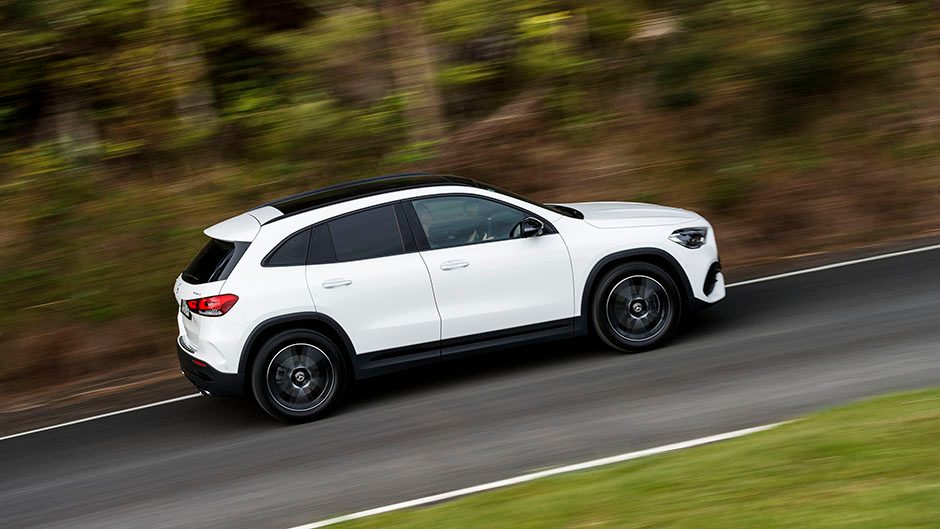
Howzit new?
This newcomer is much taller than before, up by 122mm for improved headroom and despite better legroom in both areas, the overall vehicle is 14mm shorter, a clever trick that reflects a 30mm longer wheelbase. The AWD variants, like this GLA 250 4Matic, are also better when the metal road turns to a dirt track, with an Off-Road mode part of the Dynamic Select system. A downhill speed regulator forms part of that. Extra safety items are also added this time round, comprising most of the active driving assist types, though there are also nine airbags in the event the active safety items don’t quite do the trick.
The new GLA look is more aggressive too, with power domes on the bonnet for instance and there’s extra cladding for that authentic off-road look. Lots of the specification enhancements have already been seen on new A-Class, like MBUX AI-led voice control, and the widescreen side-by-side digital instruments and infotainment screens.
At the entry point is the GLA 200 powered by a 1.3T engine and front-wheel drive but it’s the more muscular, more popular four-paw 250 variant we’ve got for our evaluation. It comes packing a 2.0T engine good for 165kW and 350Nm, the output dealt to by an eight-speed twin-clutch gearbox. Over and above what the GLA 200 comes with, the 250 features a panoramic powered sunroof and heated electric front seats, lowered comfort suspension, and sports steering. Without optional extras this goes for $86,500.
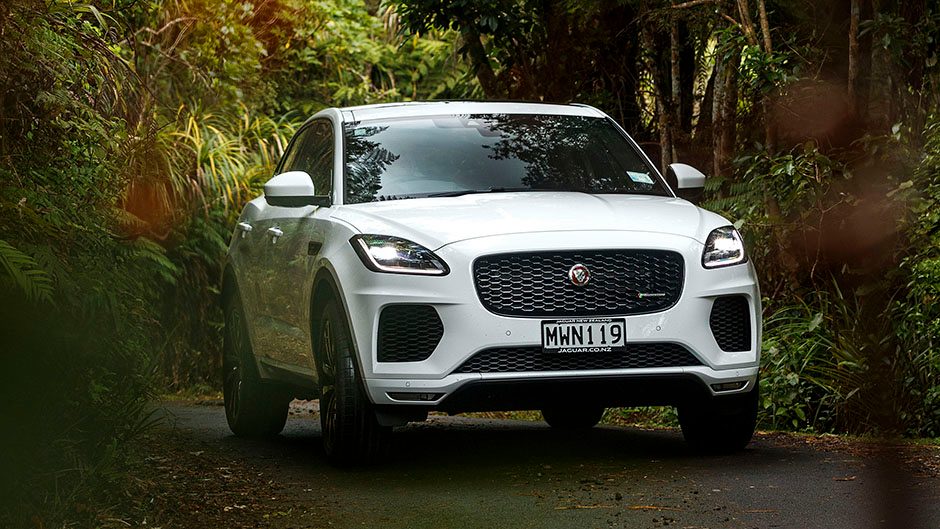
Whatzit up against?
What similar sized Euro goes for similar money, you might wonder? Well, there’s X2 and Q3, and XC40 while Jaguar has its E-Pace, easily the most popular being the P250 R-Design SE (comprising most of the 200 sold last year). Okay, it’s not strictly European given Brexit is done and dusted but it does compare favourably by being like-sized, like-priced ($84,900) and similarly specified. Only here the powered sunroof, Qi charger and seat heaters cost extra, though this has autodipping as standard and self-parking as well.
As with the GLA 250 this also features AWD and a 2.0L turbopetrol engine, the Ingenium example good for 183kW and 365Nm. Both protagonists come with a powered tailgate, 19-inch alloys, traffic sign recognition, LED lights, powered front seats, leather trim (artificial in the Benz), shift paddles, nav and dual zone air. The GLA has nine airbags to the six of the Jaguar. You pay extra for adaptive cruise in both.
If we’re absolutely honest with you from the outset, there’s not a whole lot to pick between the pair, with similar part-time AWD powertrains (one gets nine speeds, the other eight). Differences are mainly in appearance, performance and dynamics, each having its moments. Given SUVs aren’t really bought necessarily on how fast they go in a straight line or how diligently they track through corners, it may in the end come down to more arbitrary differences, like brand and aesthetic preferences.
Comparisons are generally fairest when both vehicles are brand spankers, but that’s seldom possible and in this case the Mercedes is the newcomer, while the E-Pace has been on sale here for going on three years. So it doesn’t have quite the modernity of the Mercedes; it’s more goggle-eyed and the instruments aren’t plucked from the Starship Enterprise. But in profile the Jaguar looks the more sporting of the two. Is this the case?
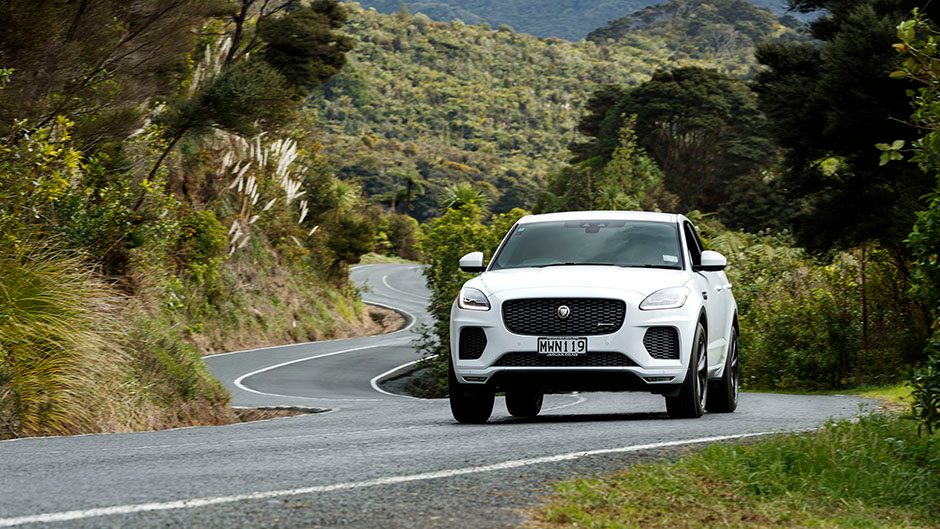
Weighty issues
For dimensions this pair looks well matched, the E-P 4.4m long and nigh on 2m wide while the GLA is 4.4m and 1850mm wide. The Jaguar is also 30mm wider in the tracks. Pop them on a set of four-corner scales, however, and the E-Pace’s 1907kg kerb weight compares with 1687kg for the GLA 250. The former uses the Evoque platform, and the old one at that, the latter the more modern A-Class underpinnings.
Unsurprisingly, the GLA is a bit of a hare here, exactly matching its claim of 6.7sec to 100, and not a hundredth better. Helping its cause is a fast-shifting twin-clutch gearbox (that sometimes dithers) to the Jaguar’s slower nine-speed auto (albeit with creamy smooth shifts). That the Jaguar limits the damage to a second adrift in both performance criteria we use is largely due to its slightly higher power output. In day-to-day running you might not notice, however, as both of these are on the case early, and each feels strong from under 2000rpm so they purr around town effortlessly. Fuel use suffers as soon as you start pushing any in the Jaguar, however. We achieved single figures or low double digits for the Merc but numbers were into the 14s for the Jaguar which was seldom in single figures. Moreover, the brakes, while good in the E-Pace, soon took to smoking and stinking after a couple of emergency stops where the Mercedes was unruffled by the same procedure.
However, the tables turn somewhat on the cornering front. Despite its extra weight the E-Pace distributes it better and feels nicely balanced as a result. With standard torque vectoring by brake it was less prone to running wide of the line than the GLA 250 and we seldom saw ESP intervention in the Brit. Our particular vehicle featured the optional adaptive dampers ($2050) but we left it in Normal most of the time. It feels feistier and more locked down in the Dynamic setting to be sure but more relaxed and yet still totally capable in Normal.
Ride quality in both is delicious, supple. The GLA occasionally runs out of travel but no complaints otherwise, especially with its plush driver’s seat. That in the E-Pace is firmer but in Normal mode the ride is excellent. Both are equally quiet on our rowdier chipseal surfaces, worst figures generated around 73dB.
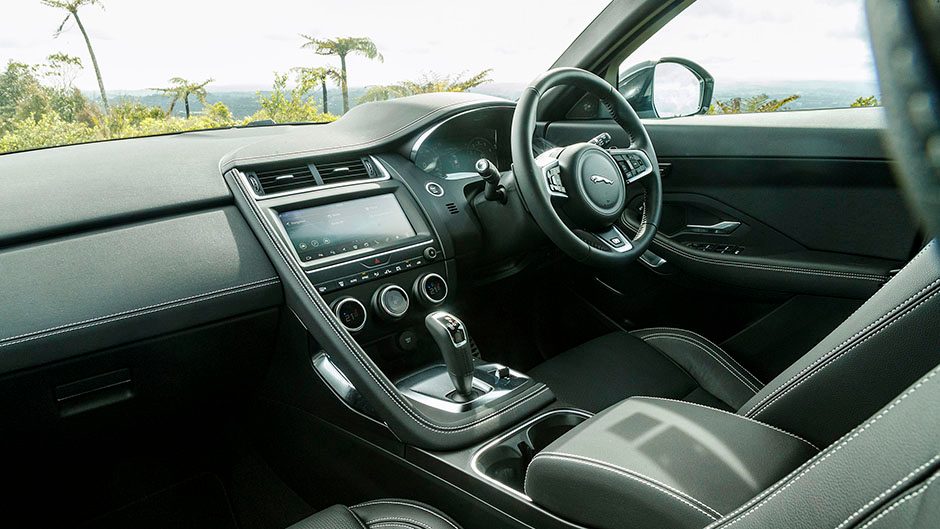
Cabins similar but quite different
There’s something to be said for not trying to get rid of every button in the centre console, or even the gearstick for that matter. Sure, both have paddles so it’s not such an issue where the shifter is located (on the column for the GLA) but for more enthusiastic driving the Jaguar’s regularly placed lever is awesome. Just shove it across for Sport transmission mode when overtaking then back into position for cruising. You need to change modes in the GLA to achieve this. Imagine how quick and easy that isn’t so it’s a paddling instead.
And for simplicity of use the Jaguar cabin is tops. There’s a regular drive mode and a Dynamic mode for when the mood takes you. Recirc and main volume buttons are easily seen, and the trip computer a snip to scroll through. It’s all much fussier and more distracting in the GLA, even if the info screen has vastly better resolution and the voice control occasionally understands you. But the trip data etc are accessed by tiny haptic tabs on the wheel, and are distracting to use. Not so in the Jaguar, much simpler.
What about the versatility? Both have powered fifth doors, and in behind the GLA’s is a 435L space, the Jag’s 425L and they look the same. As with Jag’s wildly optimistic 7sec sprint time the firm also suggests 577L of luggage capacity but that is surely to the roofline and is simply misleading. The pair offer room for four adults but the Mercedes feels slightly airier up front and has a touch more leg room in the back.
Overall we’d say it’s a marginal win to the Mercedes here, based mainly on the fact it is right weighted where the Jaguar needs to go on a diet. It affects both its (ultimate) performance and its day to day economy, though not its dynamics. With its more modern styling inside and out, and ever so slightly greater spec and space, the GLC edges the E-Pace barely in this comparison.
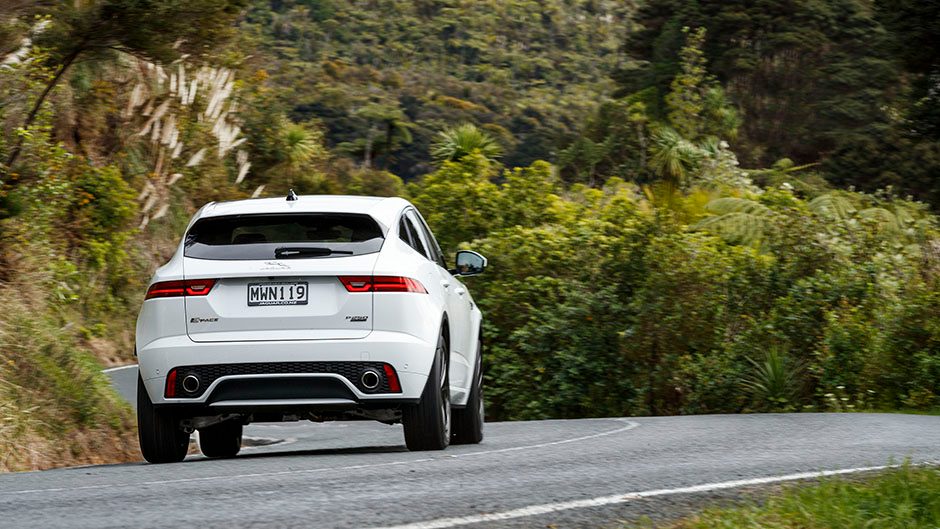
| Model | Jaguar E-Pace P250 R-Dynamics SE | Price | $84,900 |
| Engine | 1997cc, IL4, T/DI, 183kW/365Nm | Drivetrain | 9-speed auto, on-demand AWD |
| Fuel Use | 9.5L/100km | C02 Output | 215g/km |
| 0-100km/h | 7.87sec | Weight | 1909kg |
| Model | Mercedes-Benz GLA 250 4Matic | Price | $86,500 |
| Engine | 1991cc, IL4, T/DI, 165kW/350Nm | Drivetrain | 8-speed twin-clutch, on-demand AWD |
| Fuel Use | 7.5L/100km | C02 Output | 170g/km |
| 0-100km/h | 6.70sec | Weight | 1687kg |


